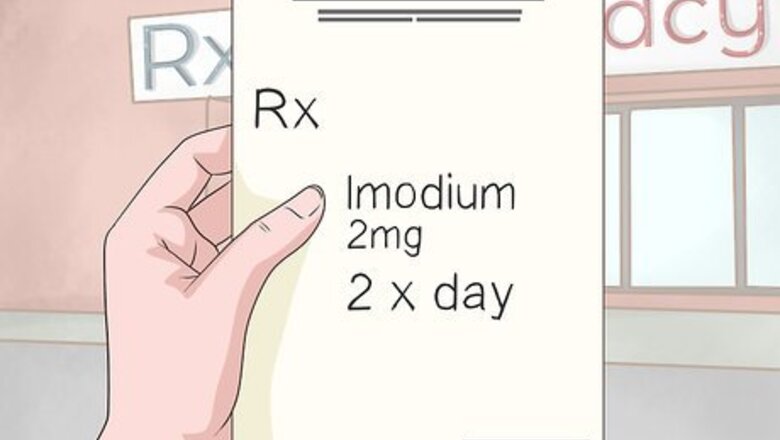
views
X
Research source
The drug comes either as solid pills or as a liquid that will come in a plastic bottle with a plastic spoon used to measure out the correct dosage. Take only the amount that your doctor prescribed to you, as taking more and overdosing can cause negative side effects or death.
Ingesting Imodium
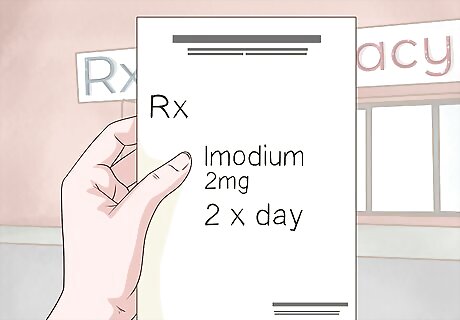
Purchase Imodium or receive a medical prescription for the drug. If you have frequent loose, runny bowel movements, use Imodium to clear up your symptoms. Imodium is sold over the counter at most drugstores, pharmacies, and at many supermarkets. As always, read the drug facts label before taking the medication to figure out how much Imodium you can safely take in 1 day. If you have severe diarrhea, or if it doesn’t clear up after using Imodium that you purchased over the counter, visit your doctor and discuss a prescription for a stronger dosage of the medication.
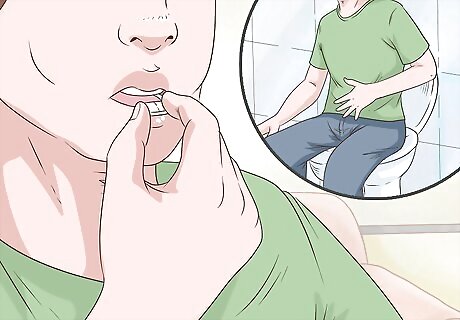
Take Imodium after a loose bowel movement. If you’re suffering from diarrhea and have purchased or been prescribed Imodium, take the medicine after a loose stool. If you’re concerned about having diarrhea when in public, you can also take Imodium 30 minutes before leaving your home. Depending on the prescription dosage you’ve been given, you may or may not be able to take Imodium more than 1 time per day. Read the directions printed on the bottle to find out how many times per day you can take the drug. Never take more than 16 milligrams in a single day unless your doctor says it’s safe to do so.
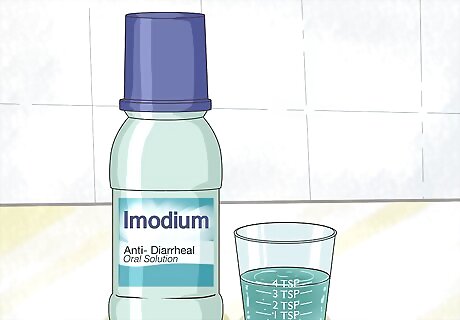
Measure out the suggested dose of liquid medicine to avoid side effects. If the pharmacy sold you liquid Imodium, the plastic bottle of liquid Imodium should have come with a plastic spoon with milliliters marked on the side. Pour out that exact amount into the plastic spoon. Set the tip of the spoon between your lips, and pour the medicine into your mouth. If you’re taking prescription-strength Imodium, read the label carefully to determine how much Imodium your doctor prescribed for you and how often to take the medication. If you take too much Imodium, it can cause serious heart problems and even death.
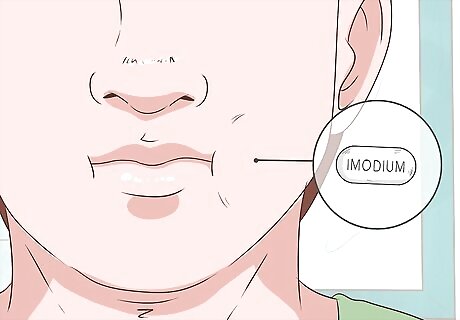
Chew Imodium pills before swallowing them. If you purchased solid pills over the counter at a local pharmacy or if your doctor prescribed Imodium in a solid form, thoroughly chew up the pills or tablets before swallowing them. This makes it easier for your body to process the drug and allows it to enter your bloodstream more quickly. Take only the suggested (or prescribed) dosage, as taking more can have serious side effects. Not all Imodium pills are the same strength, so if you had the prescription filled at a different pharmacy than usual, read the bottle to check the prescription strength.
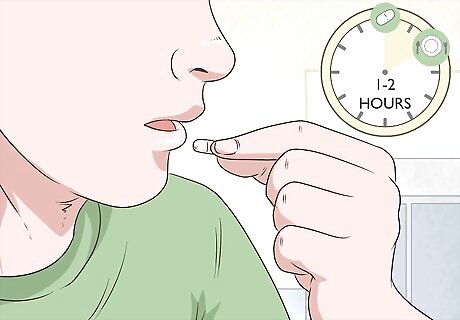
Use Imodium 1–2 hours before eating a meal. Imodium should not be taken with food. So, when you’re planning out when to take your daily dosage of Imodium and when to eat, give yourself at least 60 minutes between taking the drug and eating food. For example, if you usually eat dinner at 7:30 pm, take Imodium at 5:30 or 6:30 pm. Depending on your daily schedule, this may mean that you need to take Imodium while you’re still at work or school.

Take solid or liquid Imodium with a full glass of water. Since it’s designed to dry up your diarrhea, Imodium has a dehydrating effect on your body. To avoid dehydrating yourself, drink plenty of water when you take your daily Imodium dosage. Fill up a glass with water and drink the entire thing either before or after you’ve swallowed the dose of Imodium. In general, while you’re taking Imodium, drink plenty of liquids to keep your body well hydrated. If you don’t want to have to get up in the night to pee, take the Imodium at least 2–3 hours before your bedtime.
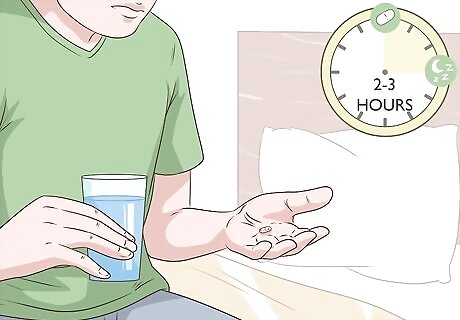
Ingest your Imodium dosage at night 2–3 hours before bed. Since it typically causes you to feel drowsy, take Imodium in the evening or at a time when you're at your own home. For example, if you typically go to bed at 11 pm, you could take your Imodium dosage at 9 pm to help you start feeling drowsy before your bedtime. If you must take Imodium in the morning or during the day, have a cup of coffee or other caffeinated beverage along with it. This will wake you up and prevent you from becoming too drowsy.
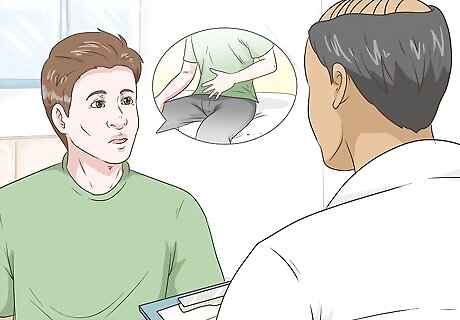
Tell your doctor if your symptoms do not improve after 10 days. If you’ve taken Imodium for 10 consecutive days and you still have diarrhea, return to your doctor. Imodium isn’t effective for everyone, and you may be one of the people whose diarrhea isn’t cured by the drug. Do not stop taking the drug after 10 days, however, without permission from your doctor. It will take at least 48 hours for the Imodium to start working, so don’t worry if you continue to have diarrhea for the first couple of days that you’re taking the medication.
Dealing with Side Effects
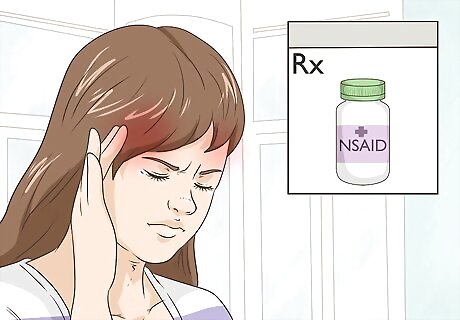
Ask your doctor how to respond to side effects of Imodium. The majority of the drug’s side effects are relatively mild but affect many of the patients who take it. Common side effects include constipation, feeling dizzy or nauseous, and having a headache. Your doctor may suggest that you take an over-the-counter NSAID like Ibuprofen or Tylenol to stop minor symptoms. If you find yourself seriously constipated and go more than 3–4 days without a bowel movement, visit your doctor and ask if you should continue taking Imodium.

Avoid driving after you’ve taken a dosage of Imodium. Imodium can impair your thinking and slow down your reaction time, so it’s best to take Imodium at a time when you’re done driving for the day. If you work at a job where you drive heavy machinery (e.g., a forklift or construction equipment), Imodium may also impair your abilities to safely operate these if taken during the day. If you must drive after you’ve taken the drug, be extra attentive to the conditions of the road and other drivers around you.

Do not drink tonic water while you’re on Imodium. Chemicals found in tonic water can interact with Imodium and lead to serious heart problems. If you’re used to drinking tonic water, try switching to a different drink instead, like club soda. This includes alcoholic drinks, like gin and tonic.
Do not take Imodium if you have bloody stools or a high fever. If your diarrhea is accompanied by bloody (black) or tarry-textured stools, do not take Imodium. Also avoid using the drug if you have a fever over 102 °F (39 °C), or if your diarrhea is caused by an antibiotic medication that you’re currently taking. Finally, do not take Imodium if you have ulcerative colitis, a condition that entails inflammation of the rectum. With any of these conditions, visit your doctor and describe your symptoms. Bloody stool can be a sign of internal bleeding, so make an appointment as soon as possible. Have a stool test done if you have bloody stools since you could have a bacterial infection and taking Imodium may make the illness worse.
See your doctor immediately if you have signs of an allergic reaction. In a small number of people, Imodium can cause a serious allergic reaction. Signs of this include wheezing, tightness in your chest, and trouble breathing or talking. If you’re allergic to the drug, you may also have an itchy, swollen rash on your skin. If you notice any of these signs, visit your doctor as soon as possible. In a serious allergic reaction, your face, mouth, throat, and tongue may start to swell up.
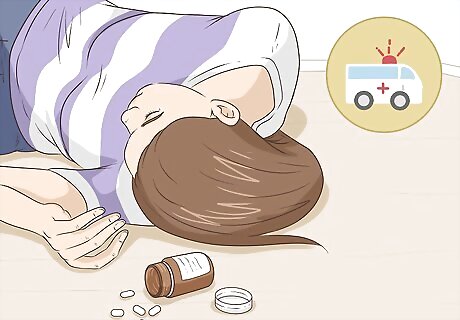
Visit an emergency room immediately if you overdose on Imodium. Imodium is a powerful medication and overdosing on it can have serious consequences, including torsades de pointes, cardiac arrest, or death. If you notice signs of Imodium overdose—or if you realize that you’ve taken more than double your prescribed dosage—visit an emergency room as soon as possible. Signs of an Imodium overdose include fainting and a fast, irregular heartbeat. If you’ve lost and regained consciousness, ask someone else to drive you to the hospital rather than driving yourself.

















Comments
0 comment